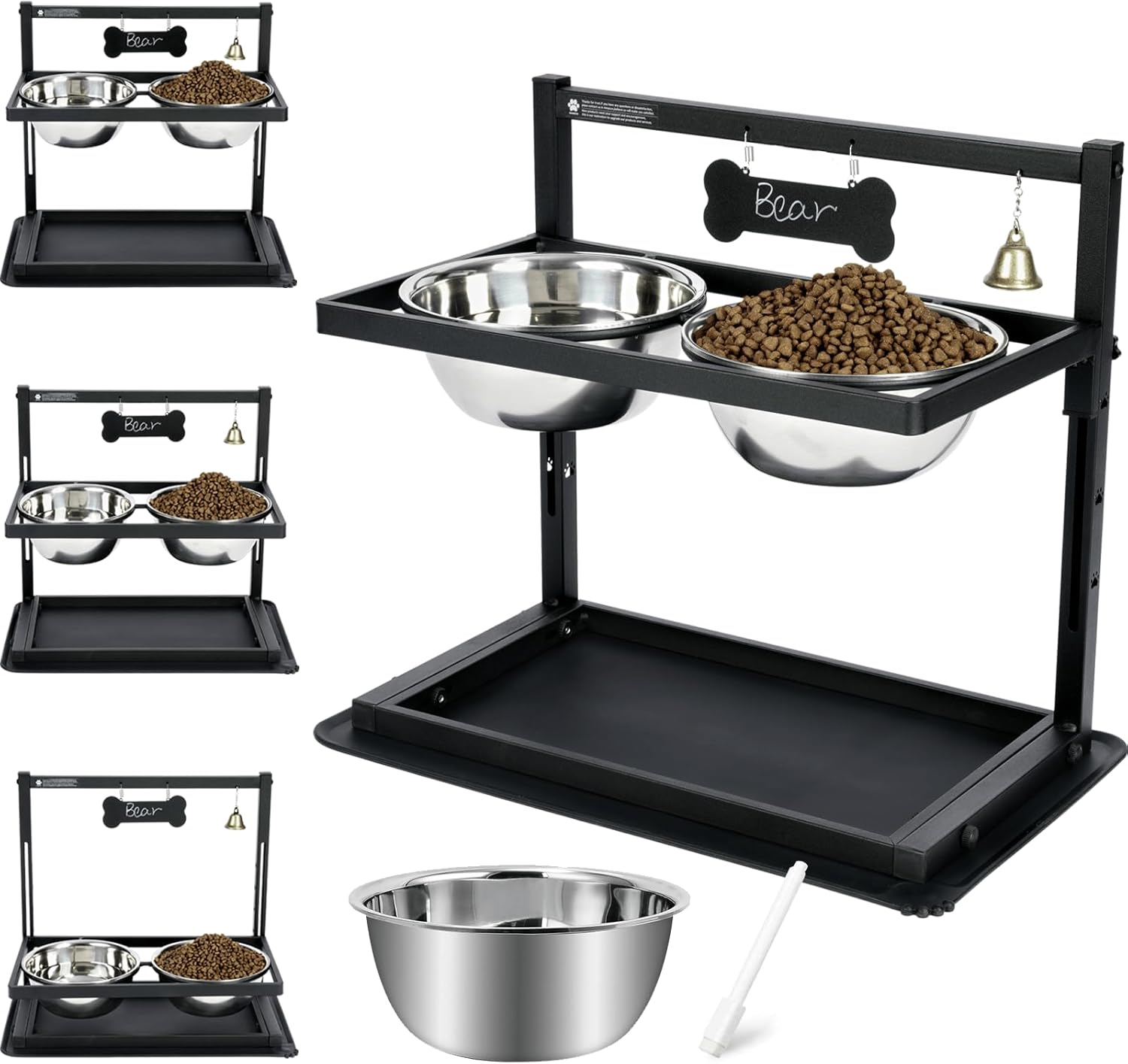How to Train Your Dog to Be Obedient and Well-Mannered
Introduction
Training your dog to be obedient and well-mannered is not only a matter of good behavior but also essential for ensuring safety, happiness, and a strong bond with your pet. Obedient dogs are easier to manage, less likely to develop behavioral problems, and more enjoyable to have around. Whether you're training a puppy or an adult dog, the principles of obedience are the same. This guide will provide you with the tips, tricks, and techniques you need to successfully train your dog to be well-mannered and responsive to your commands.
1. Start with Basic Commands
Why Basic Commands Matter
Before diving into complex training, ensure your dog masters basic commands such as "sit," "stay," "come," and "down." These commands are the foundation of good behavior and help build a solid communication channel between you and your dog.
How to Teach Basic Commands
- Choose a Quiet Space: Start training in a distraction-free environment to help your dog focus.
- Use Positive Reinforcement: Reward your dog with treats, praise, and affection every time they perform the desired action.
- Be Consistent: Always use the same words for commands and reward consistently to reinforce behavior.
- Repeat Regularly: Short, frequent training sessions (5–10 minutes) are more effective than long, tiring ones.
- Gradually Add Distractions: Once your dog has mastered basic commands, practice in more distracting environments like the backyard or local park.
2. Establish a Routine
Why a Routine is Important
Dogs thrive on consistency, and having a routine can help them understand expectations and feel more secure. Training becomes easier when dogs know what to expect and when to expect it.
How to Establish a Routine
- Set a Schedule for Meals and Walks: Stick to consistent times for feeding, bathroom breaks, and exercise.
- Incorporate Training Into Daily Life: Instead of formal training sessions, use opportunities throughout the day to reinforce good behavior—such as sitting before meals, waiting at doors, or walking politely on the leash.
- Keep a Regular Bedtime: A consistent sleep schedule helps dogs rest and recharge, making them more attentive and ready to train the next day.
3. Use Positive Reinforcement
Why Positive Reinforcement Works
Positive reinforcement focuses on rewarding desired behaviors rather than punishing unwanted ones. This method not only strengthens the behavior you want to see but also builds trust and a positive relationship between you and your dog.
How to Implement Positive Reinforcement
- Reward Immediately: When your dog exhibits the behavior you're training them to do, reward them right away so they can connect the action with the reward.
- Vary the Rewards: Use treats, toys, praise, and affection to keep the rewards interesting and motivating.
- Be Specific with Praise: Verbal cues like “Good job!” or “Yes!” will help your dog understand what they did right.
Tips
- Keep training sessions fun and positive. If your dog gets frustrated, take a break and try again later.
- If your dog makes a mistake, redirect them calmly to the desired behavior. Never use physical punishment or negative reinforcement, as it can harm the relationship you’re building with your dog.
4. Teach Self-Control and Impulse Control
Why Self-Control is Crucial
Dogs are often impulsive by nature, but teaching them self-control is an important part of creating a well-mannered pet. Impulse control helps your dog learn to resist temptations and make better decisions in various situations.
How to Teach Self-Control
- Use the “Wait” Command: Before feeding your dog, have them wait calmly before you place their food down. This helps them develop patience and impulse control.
- Teach “Leave It”: This command teaches your dog to resist the urge to grab something they shouldn’t, whether it’s food, a toy, or an item from the trash.
- Use a Leash for Control: When practicing impulse control, a leash gives you more authority and control over your dog, helping you guide them when they become too eager or excited.
Tips
- Start with short waits and gradually increase the duration as your dog becomes more patient.
- If your dog becomes too excited or distracted, refocus them by calling them back to the desired position.
5. Socialization is Key
Why Socialization is Important
Socializing your dog is an essential part of creating a well-behaved, well-mannered companion. Dogs who aren’t properly socialized can develop fear, anxiety, and aggression, leading to behavioral issues. Proper socialization helps your dog feel comfortable around different people, animals, and environments.
How to Socialize Your Dog
- Introduce Them to New Environments: Expose your dog to different locations like parks, busy streets, pet stores, and the homes of friends or family.
- Introduce Other Animals: Allow your dog to interact with other well-mannered dogs in controlled settings.
- Gradually Increase Challenges: Start with calm, familiar environments and gradually introduce more challenging or distracting settings as your dog becomes more confident.
Tips
- Positive interactions during socialization are key. If your dog has a negative experience, it can hinder their socialization progress.
- Be patient and allow your dog to take their time in new situations. Never force them into a scary or overwhelming scenario.
6. Correct Bad Behaviors
Why Consistent Corrections Are Necessary
While teaching positive behaviors is important, correcting bad behaviors is also crucial for raising a well-mannered dog. Dogs need clear boundaries to understand what is and isn't acceptable behavior.
How to Correct Bad Behaviors
- Redirect Attention: Instead of punishing your dog for undesirable behavior (like chewing on furniture), redirect their attention to an appropriate toy or activity.
- Use Commands for Redirection: If your dog is engaging in undesirable behaviors like jumping on guests, use commands like “sit” or “down” to redirect their energy into something more appropriate.
- Consistent Reinforcement: Consistency is essential when correcting behaviors. If you don’t want your dog jumping, for example, make sure everyone in your household applies the same rule.
Tips
- Never use physical punishment; instead, focus on gentle redirection or removing the dog from the situation.
- Stay calm and assertive when correcting behaviors. Dogs respond better to calm authority than frustration or anger.
7. Stay Patient and Consistent
Why Patience and Consistency Matter
Training takes time, and every dog learns at their own pace. Some dogs might catch on quickly, while others need more time to understand commands. The key is to stay consistent and patient throughout the training process.
How to Maintain Patience and Consistency
- Set Realistic Expectations: Understand that training takes time and progress may be slow at first. Celebrate small victories along the way.
- Create a Routine: Stick to a consistent training schedule and incorporate lessons into daily life to reinforce good behavior.
- Never Give Up: If your dog struggles with certain commands or behaviors, don’t give up on them. Keep practicing, and remain positive and encouraging.
Conclusion
Training your dog to be obedient and well-mannered is an ongoing process, but with patience, consistency, and positive reinforcement, you’ll see great results. By teaching basic commands, setting clear boundaries, socializing your dog, and correcting bad behaviors, you’ll build a well-behaved companion that is both happy and safe. The effort you invest in training will pay off with a lifelong bond and a well-mannered dog who listens and respects your commands.
Affiliate Products



